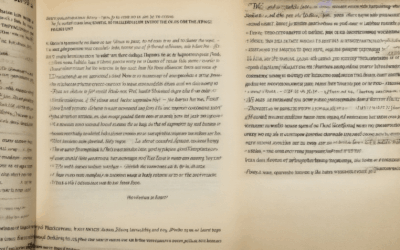Life’s journey often feels like a whirlwind of chaos, stress, and uncertainty, leaving many of us in search of peace—a calm haven amidst the storm. Finding inner peace is not just a luxury but a necessity for living a balanced and fulfilling life. Whether you’re grappling with daily pressures, seeking solace after experiencing loss, or simply yearning for a sense of stability, the pursuit of inner peace is universal. This guide aims to illuminate your path, offering practical insights, spiritual perspectives, and actionable steps to cultivate a serene mindset. By exploring the multifaceted dimensions of inner peace—from understanding its definition to embracing faith and gratitude—you’ll discover the tools needed to navigate life’s ups and downs with grace and resilience. Let’s embark on this transformative journey together, uncovering the secrets to finding peace in life’s journey.
Key Takeaways
- Cultivate mindfulness and presence: Through meditation and staying grounded in the present moment, reduce stress and find calm.
- Practice gratitude daily: Acknowledge positives to shift your mindset toward joy and contentment.
- Connect to a higher purpose: Discover stability and strength by aligning your life with a meaningful cause.
- Be self-compassionate: Treat yourself kindly during challenges to accelerate your peace journey.
- Meditate regularly: Develop relaxation and focus to enhance your overall well-being.
- Journal your emotions: Gain clarity and process feelings healthily through written expression.
- Limit negative influences: Protect your peace by surrounding yourself with uplifting environments and people.
- Engage in supportive communities: Find encouragement and guidance from like-minded individuals.
- Seek God’s wisdom: Find peace through His Word and by trusting in His divine plan.
- Pray for inner peace: Access a deeper sense of calm and connect with your spiritual side through prayer.

How to Find Peace in Your Life
Finding peace in your life involves a combination of self-awareness, healthy habits, and intentional actions. Here’s a structured approach to help you achieve greater peace:
- Prioritize Sleep : Aim for 7-9 hours of quality sleep each night. Establish a consistent bedtime routine and create a relaxing environment to improve your mood and energy levels.
- Nourish Your Body : Start your day with a nutritious breakfast to avoid mood swings and maintain steady energy. Incorporate regular, balanced meals throughout the day to support overall well-being.
- Organize Your Work : Use tools like planners or digital task management apps to manage your responsibilities effectively. Take short breaks to prevent burnout and return to your tasks with renewed focus.
- Carve Out Me Time : Schedule regular “me time” activities, even if just 15 minutes a day. Engage in enjoyable activities like reading or walking to recharge and rejuvenate yourself.
- Strengthen Relationships : Make efforts to connect with friends and family. Plan regular gatherings or calls to maintain strong social support, which contributes to happiness and reduces stress.
- Practice Mindfulness : Explore meditation apps like Headspace or Calm for guided sessions. Practice deep breathing exercises during stressful moments to alleviate anxiety.
- Be Active : Begin with small physical activities such as walking or stretching. Consistent exercise can release endorphins, boosting your mood and reducing stress.
- Cultivate Gratitude : Keep a gratitude journal to note daily positives. This habit shifts your mindset towards positivity and increases life satisfaction.
- Manage Financial Stress : Create a budget and automate savings. Track expenses to identify areas for reduction and work towards debt relief to ease financial worries.
- Explore Spiritual Practices : Consider attending religious services or exploring faith traditions for community and purpose. Personal spiritual practices can offer additional comfort and direction.
- Limit Negative Influences : Reduce exposure to negative content on social media and limit screen time. Focus on positive information and uplifting environments to enhance your mood.
- Set and Celebrate Goals : Define achievable personal goals and document your progress. Celebrate milestones to boost confidence and motivation.
- Seek Professional Help : If underlying issues contribute to stress, consider consulting a therapist for tailored strategies and support.
By integrating these strategies into your daily life, you can create a more peaceful and fulfilling existence. Remember, progress is gradual, so start with manageable changes and track your journey to see improvements over time.
Attracting Peace in Your Life
To attract peace in your life, consider implementing the following strategies:
- Practice Mindfulness : Begin by focusing on the present moment through meditation or deep breathing exercises. This helps reduce stress and anxiety by grounding you in the now.
- Gratitude Journaling : Shift your mindset by keeping a gratitude journal. Daily reflection on positive aspects of life fosters appreciation and reduces negativity.
- Connect with Nature : Spend time outdoors to absorb fresh air and positive energy. Simple activities like walking in a park or sitting by a lake can enhance calmness.
- Engage in Physical Activity : Incorporate exercise into your routine, such as walking or yoga, to release endorphins and boost mood.
- Limit Negative Influences : Reduce exposure to stressors like social media or negative news. Focus on positive interactions and environments.
- Build Supportive Relationships : Reach out to friends and family for emotional support. A strong social network contributes to overall well-being.
- Practice Forgiveness : Release past negativity by forgiving others and yourself. This liberation can lead to inner peace.
- Create a Peaceful Home Environment : Organize your living space and use calming elements like soft colors or lavender scents to foster relaxation.
- Embrace Uncertainty : Accept life’s unpredictability and focus on controllable aspects. This reduces worry and enhances resilience.
By integrating these practices thoughtfully, you can cultivate a more peaceful and fulfilling life. Remember, progress takes time, so start small and enjoy the journey.

Understanding Why Peace Eludes You
Struggling to find peace can stem from various psychological and emotional factors. Here’s a breakdown of the primary reasons:
- Overthinking and Anxiety: Constantly dwelling on past decisions or future uncertainties can create a cycle of worry. This overthinking often leads to anxiety, making it harder to relax and find peace.
- Social Comparison: Comparing oneself to others, especially on platforms like social media, can foster feelings of inadequacy. Remember, everyone faces challenges, and their highlight reels don’t tell the full story.
- Lack of Gratitude Practice: Gratitude can be challenging to cultivate, especially when feeling low. However, consciously focusing on positive aspects can shift your mindset and improve overall well-being.
- Past Regrets: Holding onto regrets can trap you in the past. Learning from mistakes and moving forward is more productive thandwelling on what could have been.
- Seeking External Validation: Relying too much on others’ opinions can lead to instability. Developing self-confidence and trusting your own judgment is more fulfilling.
- Unmanageable Control Needs: Fixating on things you can’t control leads to frustration. Accepting what you can’t change frees mental energy for more constructive pursuits.
- Environmental Factors: A disorganized space or chaotic routine can contribute to anxiety. Organizing your surroundings may promote a sense of calm.
- Mindfulness Challenges: Practicing mindfulness or meditation can be difficult due to wandering minds. Exploring different techniques or setting achievable goals might help establish a consistent practice.
- Isolation: Turning inward during tough times can worsen feelings of loneliness. Reaching out for support from positive influences can alleviate this burden.
Addressing these areas—managing thoughts, practicing gratitude, accepting limitations, and nurturing supportive relationships—can lead to a more enduring sense of peace. It’s a multifaceted journey requiring attention to both internal and external elements.

Understanding the Journey to Find Inner Peace
The pursuit of inner peace is a deeply personal journey that varies greatly from person to person. It often begins with a desire to quiet the external noise and reconnect with oneself. This journey may involve exploring various practices, reflecting on past experiences, and learning to live fully in the present moment.
Key Components of Inner Peace
Inner peace is not a destination but rather a continuous journey of self-awareness and growth. It involves understanding your true self, embracing your emotions, and finding harmony between your thoughts, actions, and surroundings. Here are some essential elements that contribute to this journey:
- Mindfulness and Presence: Cultivating awareness through meditation or simply paying attention to the present moment can help reduce stress and foster a sense of calm.
- Gratitude Practice: Regularly acknowledging the positive aspects of life can shift your mindset towards positivity and contentment.
- Connection to Purpose: Feeling connected to a larger purpose or meaning often provides a sense of stability and inner strength.
- Self-Compassion: Treating yourself with kindness during challenging times can accelerate your ability to find peace.
Practical Steps Toward Inner Peace
Finding inner peace requires intentional effort and consistent practice. Below are some actionable steps to guide your journey:
- Meditation: Start with guided meditations to learn techniques that promote relaxation and focus. Over time, you can develop your own practice that resonates with you personally.
- Journaling: Writing down your thoughts and feelings can provide clarity and help you process emotions in a healthy way.
- Limited Distractions: Reduce exposure to negative influences and spend time in nature or with people who uplift you.
- Seeking Community: Engage with groups or mentors who share similar goals and can offer support and guidance along your path.
Additional Tips for the Journey
While these steps are foundational, it’s important to tailor your approach to suit your unique needs. Some individuals find solace in creative expression, while others benefit from physical activity or spiritual practices. Experimentation is key—find what brings you into alignment with your true self.
Conclusion
The journey to inner peace is a transformative experience that takes time and patience. By focusing on self-awareness, practicing mindfulness, and nurturing meaningful connections, you can create a life that feels balanced and fulfilling. Remember, it’s okay to seek help along the way, whether through books, workshops, or community support. Your journey to inner peace is uniquely yours, and every step forward is progress.
What Does God Say About Inner Peace?
Inner peace is a gift from God, often referenced in the Bible as a result of trusting Him and walking in His ways. Here are key teachings from Scripture that highlight God’s perspective on inner peace:
- Trust in God Brings Peace
“Peace be upon you, my people, who trust in Me.” - Jeremiah 29:11 (NIV)
God promises peace to those who trust Him completely. This peace transcends external circumstances and is rooted in a personal relationship with Christ. - His Yoke Is Easy
“Come to Me, all you who are weary and heavy-laden, and I will give you rest. Take My yoke upon you, and learn from Me, for I am gentle and humble in heart, and you will find rest for yourselves.” - Matthew 11:28-30 (KJV)
Jesus offers rest and relief from the burdens of life when we surrender our struggles to Him. - The Word of God Leads to Peace
“For as the rain comes down from heaven and makes the earth rich, watering it and making it fruitful, so I will cause My Word to be effective in you, O house of Israel, in that day of prosperity.” - Hosea 14:5-6 (KJV)
The Word of God is a source of inner peace and spiritual growth, guiding believers to live in harmony with God’s will. - Prayer and Fellowship Bring Peace
“Rejoice in the Lord always; again, I say, rejoice. Let your forbearance be known to all men. It is the peace of God that passes all understanding, by which you may be made perfect and whole.” - Philippians 4:4-7 (KJV)
Through prayer and fellowship, believers can experience God’s peace that surpasses all human understanding. - Live Wisely and Seek God
“He who finds his delight in Me shall not be shaken; in quietness and confidence of spirit shall he live.” - Proverbs 16:3 (KJV)
Living wisely and seeking God’s presence fosters inner peace, allowing believers to navigate life’s challenges with stability.
To cultivate inner peace, seek God in prayer, study His Word, and live according to His principles. By doing so, you can experience the deep, abiding peace that He offers to all who trust Him.

What Prayer Brings Inner Peace?
Inner peace is a state of calmness and tranquility that transcends external circumstances. Many find solace through prayer, which serves as a powerful tool for connecting with one’s spirituality and finding strength.
The Lord’s Prayer
The Lord’s Prayer, a cornerstone of Christian faith, is often recited for its comforting and reassuring qualities. It emphasizes trust in God’s divine plan and His ability to provide guidance and peace:
- Famous lines include: “Our Father in heaven, hallowed be thy name.”
- “Thy kingdom come, thy will be done on earth as it is in heaven.”
- “And lead us not into temptation, but deliver us from evil.”
This prayer reminds individuals of their reliance on God’s grace and His promise to uphold them during challenging times.
The Prayer for Inner Peace
Another widely recognized prayer, often used to seek inner peace, focuses on surrendering anxiety and stress to God. It acknowledges the challenges of life while trusting in God’s presence:
Heavenly Father, I come before You today, seeking Your peace that surpasses all understanding. In the midst of life’s chaos, I long for Your calming presence to fill my heart and bring me inner peace. Your Word assures me that You are the source of true peace, and I cling to that promise.
Conclusion
Both the Lord’s Prayer and the Prayer for Inner Peace offer profound ways to find peace. They remind us that regardless of life’s circumstances, we can turn to our faith for solace and strength. Through prayer, many discover a sense of calmness that helps them navigate life’s ups and downs.




0 Comments